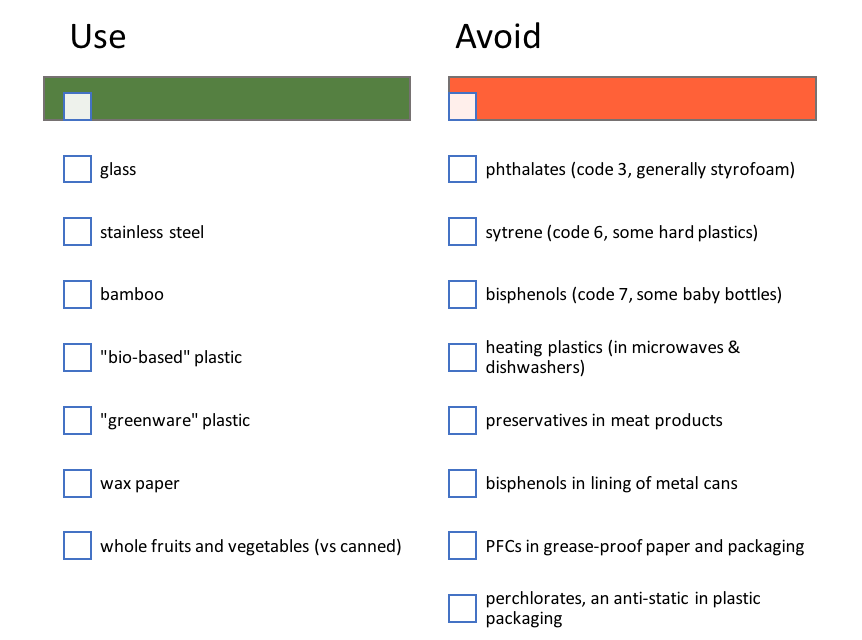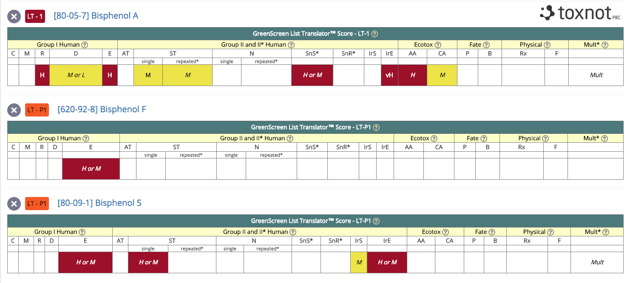A golden opportunity for food packaging manufacturers to redesign with safer alternatives
The American Academy of Pediatrics (AAP) recently warned about chemical dangers in food and food storage products- just in time to fluster parents as they start packing school lunches.
Instead of the AAP just focusing on what foods to pack for lunch, parents are asked to take a closer look at the food containers being used, and how they are used. The guidelines caution against processed foods with chemicals (e.g. lunch meats with nitrates) as well as heating plastic food containers for children’s meals (e.g. microwave or dishwater). Can these microscopic bits of plastic really be a cause for concern? According to Vox, "a study in 2012...found DEHP, a phthalate found in food packaging, had adverse reproductive effects in doses up to 25,000 times lower than had been previously imagined." Twenty-five thousand times lower!
Why focus on children?
Chemicals of concern may leach into food of developing children, get ingested, and cause hormonal problems. A follow-up article from the New York Times included other sources of information on the topic. One study from the University of California, San Francisco revealed that dozens of chemicals called environmental organic acids (EOAs) have structures similar to naturally occurring human hormones. The study cited three main reasons to focus on chemicals ingested by children and developing fetuses:
- EOAs may “…disrupt the endocrine system of developing fetuses and interfere with development;”
- Children eat more food per pound of weight than adults;
- Children’s metabolic systems and key organ systems are still developing and maturing, so hormone disruptions can potentially cause lasting changes; and
- Many chemicals have been shown to interfere with puberty, increase body fat, and affect the nervous and immune systems.
Why food additives?
There are over 10,000 food additives (chemicals) in use in the U.S. The AAP guidelines specifically recommend avoiding food coloring, nitrates, and nitrites (commonly used as preservatives in meat products). Food coloring may be associated with increased ADHD symptoms. Nitrates and nitrites can interfere with thyroid hormones. Their list focused on the chemicals of highest concern, so it may not be comprehensive of all chemicals of concern.
Why bother with accidental food additives?
Chemicals accidentally added to foods can come from a variety of places. Many foods are wrapped in food packaging where chemicals can transfer to the food. Others are contaminated from manufacturing equipment. Additionally, as foods are heated in plastic containers, there is concern that trace amounts of the chemicals can leak into foods. These chemicals are associated with a host of health concerns. And, as noted above, an accumulation of trace amounts can cause trouble. So, what are some safer food packaging options at home, and what specifically should be avoided?
Positive Steps to take at home

A Golden Opportunity for Food and Packaging Manufacturers
As a product manufacturer, these concerns are likely to alarm your end-users who are parents. Many will vote with their money, and start to purchase safer food storage options. Some may also step up and become advocates, demanding to have certain chemicals banned from use. Non-governmental organizations (NGOs) will likely take the AAP guidelines as support to push for more governmental oversight. Perhaps a few will take up their agenda with manufacturers or retailers directly, based on the recent success by consumer advocates to ban methylene chloride from paint thinners in major hardware stores.
Simple substitutions aren’t an obvious answer.The APA noted that while BPA was banned from infant bottles and sippy cups (and many companies voluntarily removed BPA from their products due to consumer pressure), the chemically similar alternatives, such as Bisphenol S, have similar properties to BPA. Consumers are savvier when it comes to regrettable substitutions. They are realizing that “BPA-free” does not mean the product is safe. Below is a screenshot from Toxnot, where users can search for chemically similar substances and view the known hazards associated with each, if any.
There is a great opportunity to be a first-mover in this space and redesign food packaging products to be less toxic for children (and people of all ages!). Understand your supply chain and what hazards are associated with the chemcials in your products. Evaluate preferred chemical alternatives. “Create product chemistry labels and reports so consumers know exactly what they are getting.” Chemical transparency in your products leads to greater consumer trust and loyalty.
Looking to get started? That’s where we come in. Toxnot provides hazard screening to start the critical process of alternatives assessment, and helps to identify admirable substitutions in your products. Our chemical hazards database contains information on over 40,000 substances and GreenScreen List Translator™ scores. Toxnot improves health and sustainability across the global supply chain with insight about the chemicals and materials that go into them.
Related Articles:
Admirable Substitutions: Preferred Chemistries in the Circular Economy




